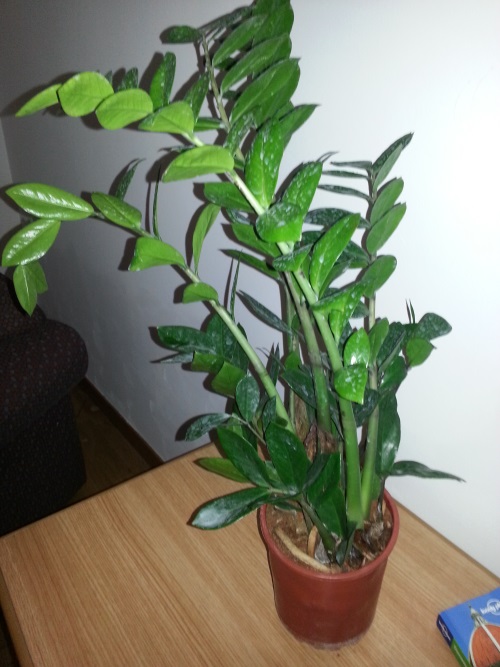






The ZZ is a rhizome plant that's a real joy to grow and to have displayed within a home. Many people mention it's a slow grower, however, one I grew one a few years go that only took about 3 years to grow stems as long as 2ft, which is not that slow. I think how quick it grows will depend on how much sun light the plant gets (do not allow the plant to sit in direct sunlight - though).
As mentioned above the plant tolerates low light, bright light and different levels of watering. However, watering depends on how much light it receives (i.e., less light = less water and more light = more water).
How it looks: The ZZ plant grows similar to tree plants or palms and has stems with many leaves growing from these stems. The leaves are a fleshy type which are only a couple of inches in length and an inch or so wide. Some of these stems from the same plant grow straight up and then others arch over, which may encourage you to prune odd looking stems to keep the plant looking full and shaped well.
Flowering: The ZZ plant does produce small flowers at the base of the plant when it's grown in it's own habitat or outdoors. The flower is a spathe type with a spadix that is not easily seen even when it does grow - because leaves can hide the flowers and they grow at the base of the stems.
Displaying: I can't say the zz plant is that fussy about where it is displayed. The place where it grows just needs to be able to accommodate it's size in diameter, which can become over 2ft once it matures - making a table area a nice place to display the plant.
Poisonous: All parts of this plant are said to be toxic if ingested by children, cats and dogs.

The zz plant is a tough cookie and will survive a certain amount of neglect. The easiest mistake to make and most common is overwatering.
Lower leaves turning yellow: A small amount of lower leaves turning yellow and falling is quite normal. If many leaves are turning yellow - check that your not overwatering.
Leaf tips turning brown: The cause is likley to be dry air and low humidity. Misting the leaves can help improve humidity.
Leaves turning brown: Overwatering is the the most common cause here, especially if the leaflet feels a bit damp and not dry.
Copyright © www.100flowers.win Botanic Garden All Rights Reserved